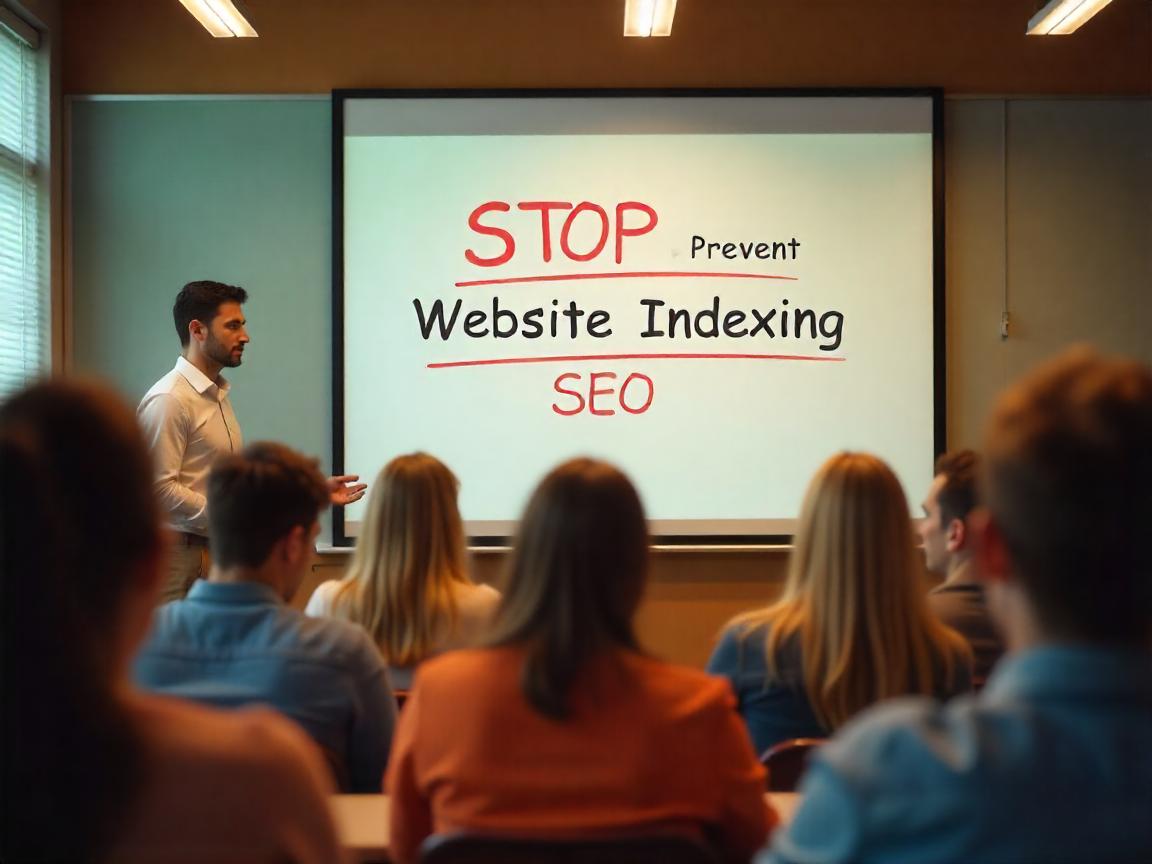
Wie man die Indexierung von Webseiten oder Seiten für eine optimale SEO-Verwaltung verhindert
Einführung in die Suchmaschinenindizierung
Die Suchmaschinenindizierung ist ein entscheidender Prozess im digitalen Marketing und der Website-Optimierung, der die Sichtbarkeit, den Traffic und den Gesamterfolg Ihrer Website beeinflusst. Das richtige Management der Indizierung ist genauso wichtig wie das Verständnis, wie man sie fördert. Dieser Artikel erklärt umfassend, was Suchmaschinenindizierung ist, warum Sie sie möglicherweise verhindern möchten, welche Inhalte von der Indizierung ausgeschlossen werden sollten, und praktische Methoden, um Ihre Website oder einzelne Seiten effektiv für die Indizierung durch Suchmaschinen wie Google und Yandex zu sperren.
Verständnis der Suchmaschinenindizierung
Die Indizierung ist der Prozess, bei dem Suchmaschinen Webseiten analysieren und deren Inhalte in einer strukturierten Datenbank, dem sogenannten Suchindex, speichern. Der Index ermöglicht es Suchmaschinen, relevante Seiten schnell abzurufen und als Antwort auf Benutzeranfragen darzustellen.
Wie funktioniert die Indizierung?
Die Indizierung folgt diesen allgemeinen Schritten:
- Entdeckung: Suchmaschinen entdecken neue Seiten durch übermittelte URLs, Sitemaps, Backlinks und interne Seitennavigation.
- Kriechen: Suchmaschinen-Roboter („Bots“ oder „Spider“) besuchen entdeckte Seiten und untersuchen Inhalte, Struktur und Metadaten.
- AnalyseInhaltsrelevanz, Originalität, Qualität und Benutzerfreundlichkeit werden bewertet.
- Indizierung: Wenn eine Seite bestimmte Kriterien erfüllt, wird sie dem Index der Suchmaschine hinzugefügt und kann in den Suchergebnissen erscheinen.
Ein entscheidendes Konzept im Zusammenhang mit der Indizierung ist das "Crawl-Budget", definiert als die Anzahl der Seiten, die eine Suchmaschine auf einer Website während eines bestimmten Zeitraums crawlt. Die richtige Crawl-Budget-Optimierung stellt sicher, dass Suchmaschinen wichtige Inhalte priorisieren und begrenzte Crawling-Ressourcen effizient nutzen.
Warum sollte man verhindern, dass bestimmte Seiten indexiert werden?
Nicht alle Seiten Ihrer Website sollten indexiert werden. Gründe für den Ausschluss bestimmter Seiten von der Indexierung sind:
- Duplizierter Inhalt: Vermeiden Sie die Indizierung mehrerer Seiten, die den gleichen oder im Wesentlichen ähnlichen Inhalt enthalten, um SEO-Strafen zu vermeiden.
- Technische Seiten: Administrative oder Backend-Seiten, die nicht für die öffentliche Ansicht bestimmt sind, sollten ausgeschlossen werden.
- Vertrauliche Informationen: Seiten, die vertrauliche, persönliche oder sensible Daten enthalten, müssen von den Suchmaschinenergebnissen ausgeschlossen werden.
- Benutzergenerierte Seiten: Einige benutzergenerierte Seiten oder Foren könnten irrelevant oder schädlich sein, wenn sie indexiert werden.
- Vorläufiger Inhalt: Entwicklungsinhalte oder unvollständige Inhalte sollten verborgen bleiben, bis sie vollständig optimiert und für die öffentliche Freigabe bereit sind.
- Affiliate- oder Werbe-Websites: Mehrere Partner-Websites, die identische Produkte bewerben, können das Ranking Ihrer Hauptseite verwässern.
Das korrekte Verhindern der Indexierung verbessert Ihre gesamte SEO-Strategie, indem die Aufmerksamkeit der Suchmaschine nur auf aussagekräftige, wertvolle Inhalte konzentriert wird.
Häufige Seiten, die von der Indexierung ausgeschlossen werden sollten
SEO-Spezialisten empfehlen im Allgemeinen, Folgendes von der Indizierung auszuschließen:
- Benutzerkontoseiten und Anmeldebereiche
- Administrative oder Backend-Dashboards
- Warenkörbe und Bestellvorgänge
- Suchergebnisseiten auf Ihrer Website
- Doppelte oder ähnliche Produktbeschreibungen
- Temporäre Aktions- oder Landingpages
- Jeglicher Inhalt, der sensible Daten enthält
Methoden zur Verhinderung der Indizierung durch Suchmaschinen
Es gibt verschiedene Methoden, um zu verhindern, dass Inhalte von Suchmaschinen indiziert werden, darunter:
1. Robots.txt-Datei
Die robots.txt Datei Suchmaschinen-Crawlern mitteilt, auf welche URLs sie zugreifen können. Um beispielsweise zu verhindern, dass Suchmaschinen eine Seite indexieren, können Sie den folgenden Code hinzufügen:
makefileКопироватьРедактироватьUser-agent: *
Disallow: /private-page.html
Obwohl weit verbreitet, garantiert diese Methode keinen vollständigen Ausschluss von der Indexierung, da Suchmaschinen eine Seite trotzdem indexieren könnten, ohne sie zu crawlen, wenn sie extern verlinkt ist.
2. Meta Robots Tag
Das direkte Hinzufügen eines „noindex“-Meta-Robots-Tags in den HTML-Code Ihrer Webseite ist ein zuverlässiger Ansatz:
htmlKopierenBearbeiten<meta name="robots" content="noindex, nofollow">
Dieses Tag weist Suchmaschinen an, den Inhalt weder zu indizieren noch Links von der Seite aus zu verfolgen. Diese Methode bietet einen robusteren Schutz im Vergleich zu robots.txt.
3. HTTP-Header (X-Robots-Tag)
Der X-Robots-Tag bietet Indizierungsanweisungen direkt im HTTP-Header. Er ist besonders nützlich für Nicht-HTML-Inhalte wie PDFs, Bilder oder serverseitige Dokumente:
makefileКопироватьРедактироватьX-Robots-Tag: noindex, nofollow
4. Kanonische URLs
Kanonische URLs identifizieren die primäre Version von doppelten Seiten. Die Verwendung des Canonical-Tags hilft, Probleme bei der Indizierung von doppeltem Inhalt zu vermeiden:
htmlKopierenBearbeiten<link rel="canonical" href="https://www.example.com/preferred-page/">
Canonical-Tags informieren Suchmaschinen über die bevorzugte Version ähnlicher Seiten und vermeiden eine unerwünschte Indizierung.
5. Passwortschutz und CMS-Plugins
Das Schützen von Seiten mit einem Passwort oder die Verwendung von CMS-Plugins, insbesondere auf Plattformen wie WordPress, bietet eine einfache Möglichkeit, Inhalte von der Indexierung auszuschließen. Passwortgeschützte Seiten verhindern von Natur aus den Zugriff von Suchmaschinen.
6. Spezielle Direktiven (Clean-Param)
Yandex unterstützt die Clean-Param Direktive, die dazu dient, URL-Parameter zu verarbeiten, indem URL-Variationen zusammengefasst werden, um die Indexierung nur einer kanonischen Version sicherzustellen. Google handhabt die Kanonisierung in der Regel effektiv durch alleinige Verwendung von Canonical-Tags.
Praktische Schritte zur Implementierung von Methoden zur Verhinderung der Indexierung
Schritt-für-Schritt-Anleitung zur Verwendung von Robots.txt:
- Erstellen oder öffnen Sie Ihr vorhandenes
robots.txtDatei im Stammverzeichnis Ihrer Website. - Fügen Sie spezifische Verbotsregeln für unerwünschte Seiten hinzu:
makefileКопироватьРедактироватьUser-agent: *
Disallow: /admin/
Disallow: /private-page.html
- Überprüfen Sie die Implementierung mit dem Robots Testing Tool von Google oder Yandex.Webmaster.
Verwendung von Meta-Robots-Tags (HTML-Methode):
- Öffnen Sie die HTML-Datei der Webseite.
- Fügen Sie das Meta-Robots-Tag innerhalb des
<head>Abschnitt:
htmlKopierenBearbeiten Implementierung von HTTP-Headern mit X-Robots-Tag:
- Konfigurieren Sie Ihren Webserver so, dass er HTTP-Header enthält. Ändern Sie für Apache
.htaccess:
csharpKopierenBearbeitenHeader set X-Robots-Tag "noindex, nofollow"
Implementierung des Canonical-Tags:
- Identifizieren Sie doppelte oder ähnliche Inhaltsseiten.
- Fügen Sie kanonische Tags im Head-Bereich hinzu:
htmlKopierenBearbeiten CMS Plugin Implementierung:
- In WordPress ermöglichen Plugins wie Yoast SEO oder Rank Math einfache Noindex-Einstellungen direkt über Seiteneinstellungen oder globale Konfiguration.
Häufig zu vermeidende Fehler
Vermeiden Sie diese Fehler, wenn Sie Seiten von der Indexierung ausschließen:
- Übermäßig breit gefasste Robots.txt-Regeln: Seien Sie präzise mit URLs, um zu verhindern, dass versehentlich wichtige Seiten blockiert werden.
- Widersprüchliche Direktiven: Vermeiden Sie Konflikte zwischen
robots.txt, Meta-Robots-Tags, Canonical-Tags und HTTP-Header. - Externe Links ignorieren: Auch durch robots.txt blockierte Seiten können über externe Links indexiert werden. Verwenden Sie Meta-Robots-Tags oder X-Robots-Tag-Header für sensible Inhalte.
Überprüfen Ihrer Seiten auf Indizierungsprobleme
Überprüfen Sie den Indexierungsstatus regelmässig mit Tools wie der Google Search Console und den Yandex Webmaster Tools. Verwenden Sie Crawl-Tools wie Screaming Frog SEO Spider, um Direktiven zu validieren:
- Google Search Console: Bietet detaillierte Berichte über indexierte und ausgeschlossene Seiten.
- Yandex Webmaster: Bietet übersichtliche Statistiken zu Problemen bei der Seitenindizierung und beim Crawlen.
Fazit: Optimales Indexmanagement für SEO-Erfolg
Die effektive Verwaltung dessen, was Suchmaschinen indexieren oder ausschließen, beeinflusst die SEO-Leistung Ihrer Website erheblich. Das Verständnis von Indexierungsmechanismen, der strategische Einsatz geeigneter Techniken zur Verhinderung der Indexierung und die konsequente Überwachung der Ergebnisse sind entscheidend für die Aufrechterhaltung einer optimalen Seitenleistung.
Die korrekte Verwendung von robots.txt, Meta-Tags, Canonicalization und serverseitigen Direktiven stellt sicher, dass Ihre Website effizient strukturiert, effektiv gecrawlt und für langfristigen Sucherfolg optimiert bleibt. Das richtige Indexierungsmanagement schützt nicht nur sensible oder unnötige Inhalte vor Suchmaschinen, sondern maximiert auch die Sichtbarkeit und das SEO-Potenzial Ihrer Website, indem es die Indexierungsbemühungen ausschließlich auf wertvolle, benutzerorientierte Inhalte konzentriert.

 Website-Indexierung richtig verhindern: Effektives SEO-Management">
Website-Indexierung richtig verhindern: Effektives SEO-Management">
